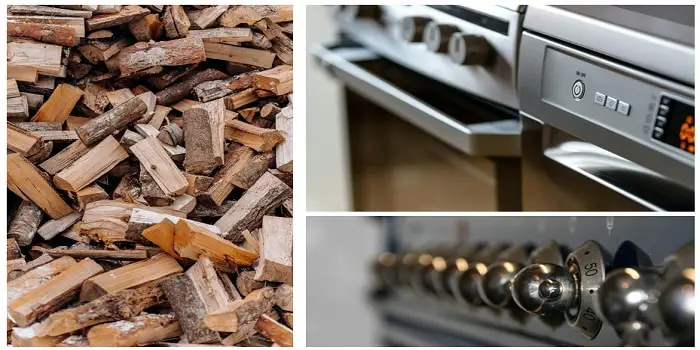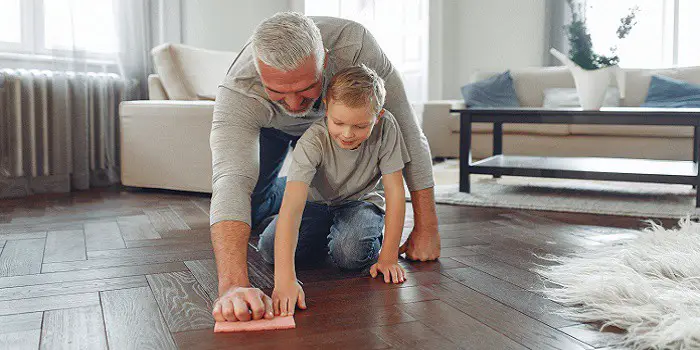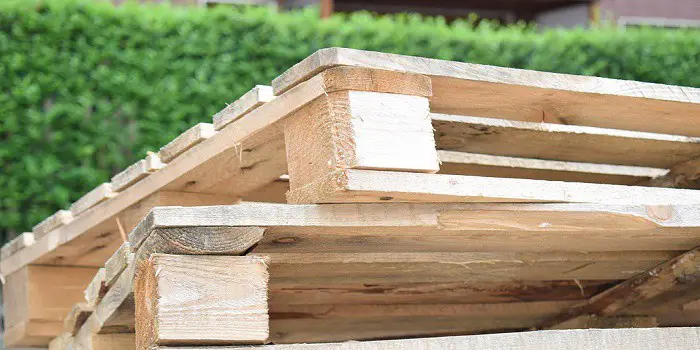
Wooden pallets are found highly useful in industries that involve packaging and distributing goods. Packing the goods in these wooden structures will ensure that the items remain stable even when lifted by a crane, pallet jack, forklift, or front loader.
While plastic pallets are also widely used in the industry, wood pallets are comparatively more popular because of their durability and sustainability.
Pallets made of different types of wood materials can also be recycled into long-lasting furniture items as they are much more affordable than plastic.
But there are a few downsides to wood pallets as well – and this is when they need to be left or stored outside for future use.
Most treated wood pallets are highly resistant and can easily withstand extreme conditions like rain, high temperature, and harmful UV rays during sun exposure.
But if you store them outdoors or leave them uncovered for a longer time period, the wood can show signs of damage sooner or later with changing climatic conditions.
This means that if you want to store your wood pallets for the short term (usually for a couple of months), you can do so without worrying about the effects of outdoor elements such as moisture, sun, snow, etc. But long-term storage of pallets outside, under adverse conditions, can degrade them, making them look bad.
Do Wooden Pallets Rot?
You may be wondering whether wood pallets are as weatherproof as plastic. Can they get wet or rotten?
Well, this will largely depend on the condition of the wood.
While untreated wood pallets hardly get wet, if they are treated with weatherproofing chemicals, they can obviously get wet.
Most wooden pallets can also rot, can grow molds, and become unusable – if left outdoors for a long period of time.
This means you will need to move them to a dry place as soon as possible before you see any signs of wood rot, mold, or mildew.
To tell if a wooden pallet is rotten, hit the board with a hammer. A piece of rotten board will most likely break in a straight line and will appear to be “brittle.” If the board is in good condition, it will still break but with a lot of force and in a splintering way.
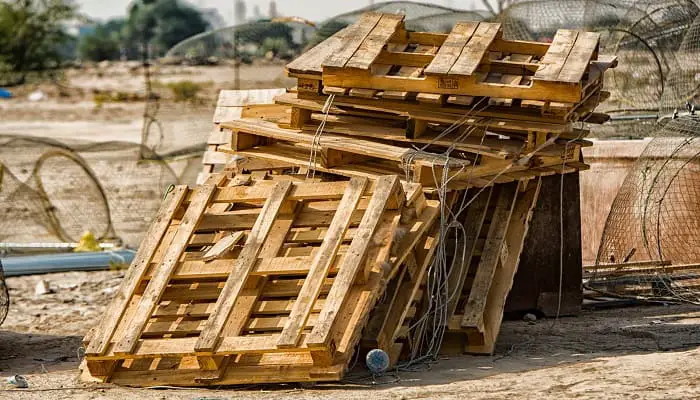
How to Keep Your Pallets from Rotting?
Wood pallets are equally used by packing companies, upcyclers, recyclers, as well as DIYers (for building pallet outdoor furniture).
If you want to keep your wood pallets (and outdoor furniture made from pallets) protected, always keep them in a dry area protected from external elements like rain, snow, and sun rays.
Particularly to prevent your pallets from rotting, you should follow these techniques when storing them for long-term:
1- Allow proper airflow
Keeping the storage area ventilated will allow proper airflow and will certainly keep your pallets stay fresh for a long.
Keep in mind that even if you store the pallets indoors in a damp environment, it can cause them to rot.
So regardless of where you keep them (indoor or outdoor), make sure that the air moves through the boards freely to dry them out.
2- Avoid direct contact with the ground
When storing the pallets for the long term, avoid resting the bottom-most board directly on the ground.
Even if it’s a paved lot it can leave the bottom boards damaged.
Placing the pallets off the ground (4×4’s dunnage) will allow the bottom board to dry. This will even help keep them protected from rain, thus increasing their overall life.
3- Rotate or move the wood pallets
As you get your new stock of weather-resistant wooden pallets, it’s good to move the older stock from the back to the front.
You should always use the older ones first before using the fresh stock.
Pallets stacked at a height should also be rotated from time to time, making sure that you put the highest ones on the bottom.
Also, if you have some pallets that are not to be used for a few months, it’s good to move them back and forth periodically (every month or two).
Are Pallets Safe to Burn in Your Home?
I know it’s very difficult for most of us to throw away the rot pallets that are of no use.
And that’s the reason it’s tempting for many people to think if they can safely burn the pallets in their wood stove burner or fire pit – to keep their home and backyard warm during winter.
The good news is – as long as the pallets, lumber, or any other dried scrap wood were not treated with toxic chemicals, you can safely burn them in your fireplaces.
Most of these untreated wood pellets are made of wood waste and are renewable & eco-friendly.
Plus, they don’t get expired, no matter how long you keep them. So you can use them safely for your winter supply season after season.
However, if they are treated with hazardous chemicals (such as arsenic or methyl bromide), they are not safe to burn. Many times, these pallets are labeled with the initials MB.
It’s, therefore, good to read the stamping (to know how the wood is exactly treated) before you decide to burn the pallets for your BBQ fuel or other supplies.
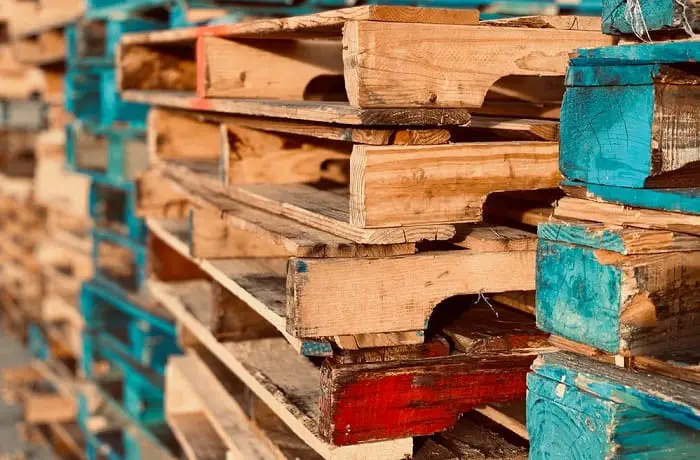
Can You Make a Deck Out of Old Treated Pallets?
Wooden pallets come in varied dimensions – the most common ones measure 1200mm by 1100mm.
Also, there are euro pallets that measure 800mm by 1200mm.
It is absolutely OK to use the pallets to make a decking area provided these are not treated with toxic chemicals.
In fact, it’s a great idea if you do not have much money or skills to build a perfect deck.
Plus, if you maintain your pallet deck well, it can last for 2-3 years.
So, if you are planning to lay your deck using pallets, here are a few steps you should follow…
Step 1- Check for wood treatment
Most wooden pallets in the US and Canada are subject to pest control treatment known as heat-treating.
The heat treatment will kill all the possible pests living in the wood and is, therefore, safe to use for decking outdoors or even for building different garden structures.
These heat-treated wood pallets are usually stamped with the code “HT” in black ink, meaning that the wood is only heat treated.
However, if there is a code “MB,” it means that the pallet is fumigated using methyl bromide. This kind of pallet is usually harmful and unsafe for decks.
Step 2- Prepare the area for working
Cleaning and preparing the work area will be the most time-consuming part of the entire deck-making process.
But it’s very important.
Pay close attention to the unwanted weeds and plants you may have. You will need to remove them to clear the area. If required, wash the entire area well and allow it to dry completely.
After the area is clean, get the space leveled up with some sand or gravel.
If you are building a pallet deck in your garden area, you can even leave the garden soil as it is so that you can use the garden in the future if you need to by simply removing the pallets.
Step 3- Place the pallets and add a finishing touch
Before you place the pallets, consider using a weed-control fabric to cover the area. This will prevent the weeds from growing and running through your wooden decking area.
Next, you will need to ensure that the size of pallet blocks you are using for your project fits your area.
By measuring the entire area, get an idea of the number of blocks you need.
Then place the pallets and add some scrap wood and/or sawing (if you have) to even up the area better.
To give a neat finishing touch to your pallet deck, use some boards or bricks to make a border.
Finally, you can use linseed polyurethane or any other wood varnish to finish the surface of your wooden pallet.
This is completely optional, but I recommend completing this step if you want to make your pallet deck last longer.
How to Seal and Make the Pallets Weather Resistant?
Staining and sealing your wooden pallets is certainly one of the best ways to treat them for outdoor use. This keeps them protected from various environmental conditions.
While most wood pallets will come heat-treated to kill the bugs present in the wood, applying the stain, varnishes, and other finishes will make them weatherproof to last for longer when stored or used outside (like in the backyard for wood furniture).
To treat pallets with stain and give your project a touch of perfect finish, you can follow these steps…
Step 1- Cleaning
Start by cleaning and removing the dirt off the wood.
To clean and prep the wood pallets for staining, you can use some old dry rags.
Using bleach or soapy water and then rinsing it with a power washer is also a good way to clean the pallets that are too stubborn to get cleaned.
Step 2- Sanding
Sand the wood gently to make the surface smoother and evener.
Make sure you choose the right grit of sandpaper (fine, medium, or coarse) according to the smoothness you need to achieve.
This will make the stain application easier and will also allow the stain to get absorbed better.
Just in case you want to achieve a lighter color by staining or you do not desire to get the perfect finish, you can choose to skip sanding the pallet wood.
You can simply stain the wood without sanding and smoothening the surface.
But if you sand, be sure you clean the sanded dust with a dry cloth before you proceed to the next step.
Step 3- Staining the wood
For applying the stain on your wooden pallets, you can either use a water-based or an oil-based stain.
There are also shallow penetrating stains and deeper penetrating stains that can be chosen based on how deep the color and penetration you want to achieve.
- Once you have chosen the stain, stir and mix the stain
- Then start with the staining process using a paintbrush
- You should stain the wood by applying a single coat along the wood grain
- If required, you can apply a second coat of stain later to make the colors deeper
Sealing and finishing the wood pallets is optional, and you can do it once the stain coat is completely dry.
I recommend sealing the wooden pallets with a topcoat finish of linseed or Tung oil – if you are repurposing them to make some awesome sofas, coffee tables, or other furniture items on your patio.
This will not only make the wooden pallets more durable but also beautiful by creating a protective and shiny hand-rubbed finish.
Final thoughts
Wood pallets are cheap and versatile. These are also great to repurpose for so many wonderful DIY pallet projects.
Whether you want to use them to create your outdoor furniture or for the packaging of goods, knowing how to keep them protected from external elements will keep your investment safe.
Hopefully, the above tips and ideas will help you in storing your wood pallets securely for a long even when kept outdoors.

Hi, I am Mark Garner a professional carpenter, woodworker, and DIY painter. I live in the small city of Peoria, Arizona as a semi-retired woodworker. I have started this blog with a simple motive to help you with my wood experience in this sector. If you like to know more about what I love doing and how it all got started, you can check more about me here.


